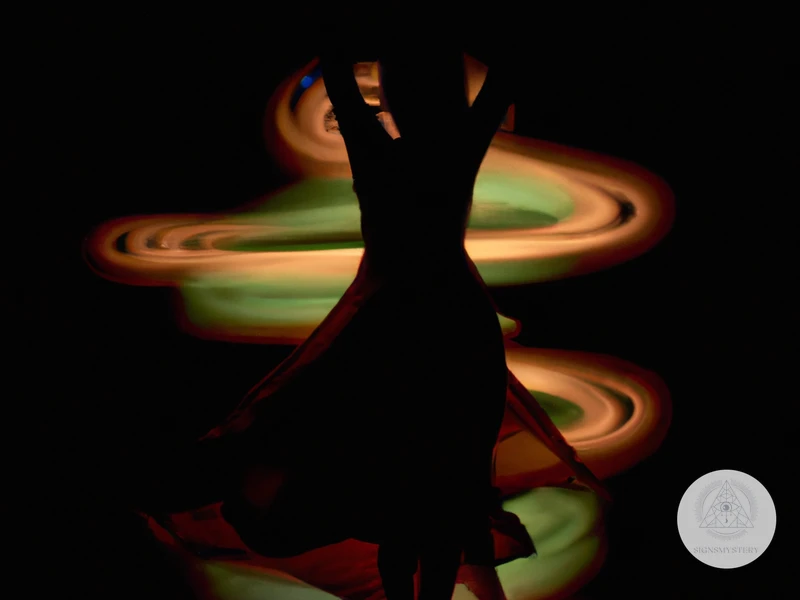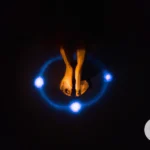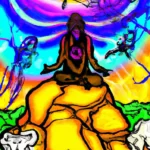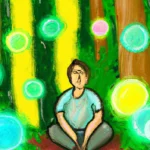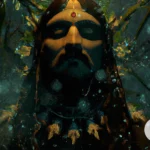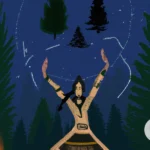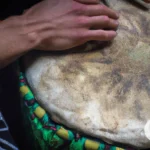Entering into alternate states of consciousness has been an essential aspect of spiritual and healing practices across the globe since ancient times. One such practice that has gained immense popularity over the years is Ecstatic Dance. Ecstatic Dance is a free-flowing, dynamic, and improvisational movement form that takes you on a journey of self-discovery, inner healing, and spiritual awakening. It is deeply rooted in the shamanic traditions of different cultures and is considered an effective way to access altered states of consciousness for healing, meditation, and personal growth. In this article, we will explore the role of Ecstatic Dance in shamanic journeying and healing, its diverse ethnic and tribal dance traditions, and techniques to incorporate it into your spiritual practice.
What is Ecstatic Dance?
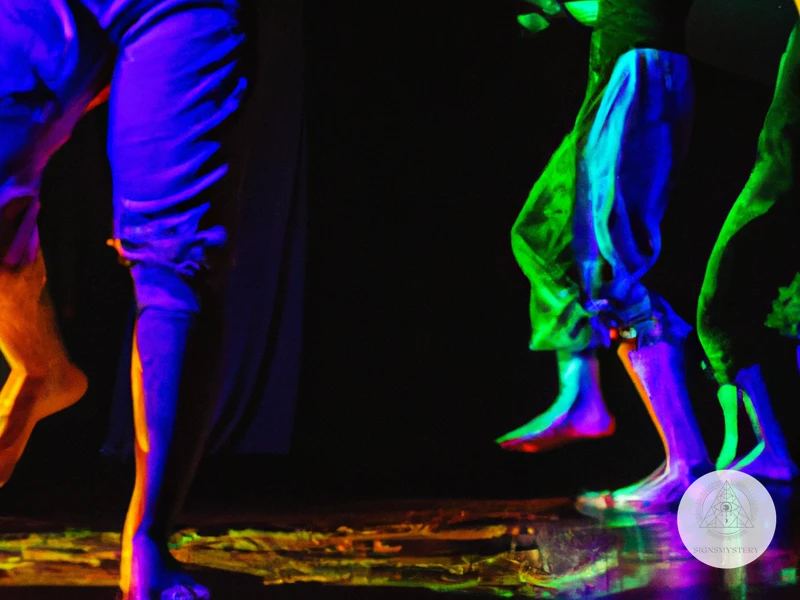
Ecstatic dance is a form of dance that focuses on self-expression through movement and rhythm. This type of dance has been practiced for centuries by different cultures as a form of spiritual and healing practice. Ecstatic dance is a free-form dancing without any choreography or guidance, allowing the dancers to move in any way that feels natural to them. This form of dance is based on the belief that by moving in this way, one can connect with their inner selves and reach a higher state of consciousness. There are various ethnic and tribal dance traditions that utilize ecstatic dance as a means of healing and spiritual practice, such as African dance, native American dance, hula dance, and trance dance. Each of these dance traditions has its unique history, style, and benefits. Ecstatic dance can also be used as a tool for shamanic journeying and healing of the mind and body. It involves setting the intention, preparing the body, entering the trance state, and reflecting on the experience. Through this practice, one can release stored emotions, increase energy and vitality, enhance creativity and intuition, and connect with spirit guides and ancestors.
History and Origins
of ecstatic dance can be traced back to ancient shamanic rituals in various cultures around the world. The ritualistic dancing is often performed to connect with the spirit world and to receive guidance and healing. The idea behind ecstatic dance is to allow the body to move freely and rhythmically, releasing any pent-up emotions, and allowing for a deeper connection with the self and the divine.
One of the earliest forms of ecstatic dance can be found in sufi whirling, a form of meditation practiced by the Mevlevi order of Sufis. This practice involves spinning in circles, which is thought to activate the chakras and create a sense of oneness with the divine.
Indigenous cultures also have a long-standing tradition of performing tribal dances as part of their shamanic practices. These dances are often performed during important ceremonies and rituals, and serve to connect the tribe with their ancestors and with the divine. They also signify important events such as births, deaths, harvests, and marriages. To this day, many indigenous cultures still practice these forms of dance as a means of connecting with their heritage.
Fire dancing is another form of ecstatic dance that has deep roots in shamanic traditions. Many shamanic cultures believe that fire has purifying properties and use it as a means of connecting with the spiritual world. Fire dancers often perform as part of these rituals, using their movements to channel the energy of the flames and create a bridge between the physical and spiritual realms.
African dance also has a strong connection to shamanism, with many tribes using dance as a means of invoking the spirits and seeking healing. Tribal dances are often accompanied by live music and are performed in a circle, with each dancer moving in their own unique style. The movements are meant to bring the dancer into a deeper state of consciousness and allow them to connect with their ancestors and guides.
The history and origins of ecstatic dance are deeply rooted in shamanic practices throughout the world. These dances are a means of connecting with the self, the divine, and the ancestors, and serve to promote healing and personal growth. Whether through sufi whirling, tribal dance, fire dancing, or African dance, the power of ecstatic dance cannot be denied.
Benefits in Shamanism
Benefits in Shamanism: The use of ecstatic dance in shamanism has numerous benefits. One of the most important is its ability to induce an altered state of consciousness. In this state, dancers can achieve a deep level of connection to the spiritual realm and tap into a powerful source of energy and healing. This is especially beneficial for shamanic practitioners who rely on spiritual guidance and support to perform their healing work.
Through ecstatic dance, individuals can also connect with their own inner wisdom and intuition. This is because the dance provides a safe and expressive space for individuals to explore their own emotions, thoughts, and experiences. It can help individuals release negative energy and emotions, and connect with their own inner guidance.
Additionally, ecstatic dance has been found to be effective in treating depression, anxiety, and other emotional imbalances. This is because it provides a way for individuals to release pent-up emotions and find a greater sense of balance and peace. The physical movement of dance also generates endorphins, which can boost mood and reduce feelings of stress and anxiety.
The benefits of ecstatic dance in shamanism are profound. It is a powerful tool for shamanic practitioners and individuals alike, offering a way to connect with the spiritual realm, find inner guidance and wisdom, and promote physical, emotional, and spiritual healing.
Ethnic and Tribal Dance Traditions
Ethnic and tribal dance traditions are an integral part of shamanic practices across the world. These dances are steeped in symbolism, culture, and history, passed down through generations. African dance, for example, is considered a universal language and a medium for spiritual connection. Hula dance is a sacred artform in Hawaiian culture that conveys stories, chants, and prayers, whereas in Native American traditions, dance is used to communicate with spirits and enhance healing. Trance dance is a type of shamanic dance that induces a trance-like state and allows the dancers to connect with their inner selves and the spirit world. Each dance tradition has its unique meaning and purpose in shamanism. To learn more about the meanings behind indigenous tribal dances, you can check out this link.
African Dance
is a powerful and dynamic form of movement that has been used for centuries in various cultures in Africa. It is a key component in many African spiritual and religious rituals, especially in West African cultures. In shamanism, African dance is used to connect with the divine, ancestors, and the spirit world.
African dance is characterized by its rhythmic movements and energetic expressions. Dancers use their entire body to communicate a message, tell a story, or express emotions. The movements are often accompanied by drumming, singing, and other musical instruments, which help to create a powerful and immersive experience.
In shamanic practice, African dance is used to induce a trance state, to connect with the spirit world and to facilitate healing. African dance is often used as a form of shamanic journeying, where the dancer is transported to other realms to communicate with spirits and ancestors.
One of the key benefits of African dance in shamanism is that it helps to release blocked emotions and trauma stored in the body. Through the movement, the dancer is able to release emotions and experiences that may have been trapped in the body for years. This can lead to a sense of liberation and emotional healing.
African dance is a powerful and culturally rich form of movement that has many benefits for shamanic practice. Its energetic and rhythmic movements make it an ideal form of movement to induce a trance state, connect with the spirit world, and facilitate healing. It is a valuable tool for anyone interested in shamanism and spiritual exploration.
If you want to learn more about African dance and shamanism, you can read our article on Spiritual African Dance in Shamanism. You can also explore other sacred art forms such as fire dancing in shamanism, which you can learn more about in our article on Sacred Art of Fire Dancing in Shamanism.
Hula Dance
Hula dance is a traditional form of dance from Hawai’i that has been passed down through generations for centuries. It is an integral part of Hawaiian culture and is deeply rooted in the native people’s connection to the land and the sea. Hula dance is often performed with live music and is used to tell stories, myths, and histories of the Hawaiian people.
History: Hula dance has a very long history, with some estimates placing its origins back as far as the 4th century CE. It was officially outlawed by Christian missionaries in the late 1800s, but it continued to be practiced in secret until the ban was lifted in the early 20th century. Since then, hula dance has experienced a resurgence in popularity, both in Hawai’i and around the world.
Costume: Traditional hula dance attire includes a pa’u skirt (a long, rectangular skirt made of a single piece of fabric), a colorful lei (necklace), and a headpiece (either a flower or a woven ti leaf). Men typically wear a malo (loincloth) and a lei.
Types: There are two main types of hula dance: hula kahiko (ancient hula) and hula ‘auana (modern hula). Hula kahiko is typically more ritualistic and is performed to chants and traditional instruments such as the ipu (gourd drum) and the pahu (drum made from a coconut tree trunk). Hula ‘auana, on the other hand, is more contemporary and is often accompanied by western instruments such as the guitar or ukulele.
Healing: In shamanic practice, hula dance serves as a form of meditation and spiritual connection. It helps the dancer to connect with their ancestors and their own spirit, as well as with the spirit of the land. Hula dance is also an excellent form of exercise, promoting flexibility, balance, and coordination.
Hula Dance Fact List:
- Hula dance originates from Hawai’i
- It has a long history, dating back to the 4th century CE
- It was outlawed by Christian missionaries in the late 1800s but continued to be practiced in secret
- The traditional costume includes a pa’u skirt, lei, and headpiece
- There are two main types of hula dance: hula kahiko and hula ‘auana
- Hula dance is a form of meditation and spiritual connection, promoting balance and coordination
Native American Dance
Native American dance is an essential and sacred part of the indigenous people’s culture, history, and spiritual practices. It has been carried through generations and remains an integral part of native ceremonies and rituals. Native American dance is performed in honor of the spirits, the earth, and the ancestors. It aims to bring balance and harmony to the body, mind, and soul.
Different tribes have various dances that reflect their unique traditions, beliefs, and legends. For instance, the Hopi tribe performs the Butterfly Dance to celebrate femininity and new beginnings. The Sioux tribe performs the Sun Dance, a rigorous and demanding dance that represents sacrifice and renewal of life. The Navajo tribe’s Squaw Dance is performed to pray for the welfare of the tribe and the people.
Native American dance is accompanied by the beat of drums, the sound of rattles, and singing. The rhythm of the drums assists the dancers in achieving a trance state that helps them connect with the spirit realm. The pace and intensity of the dance vary based on the theme and purpose of the dance, with some dances lasting for hours.
Native American dance is deeply symbolic, and each movement has significance. The dancers embody the spirits and the animals in the dance, and their movements narrate a story. The dance helps to harmonize the natural elements, the environment, and the human experience.
In addition to being a spiritual practice, Native American dance also has physical benefits. It helps to strengthen muscles, improve coordination, and promote cardiovascular health. The dancers release endorphins, which create a sense of happiness and well-being.
Native American dance has a unique power to unite people of different backgrounds and ethnicities. It brings people together to witness and celebrate the beauty and complexity of native culture. It is a way of honoring the ancestors and preserving their cultural heritage.
Native American dance is an essential part of shamanic journeying and healing. It is a sacred practice that helps us connect with the spirit world, promote physical and emotional healing, and celebrate the natural world.
Trance Dance
is a form of ecstatic dance that has gained popularity as a tool for shamanic journeying and healing. Developed by Gabrielle Roth in the 1970s, Trance Dance combines traditional shamanic practices with modern music and movement.
In Trance Dance, the participants wear a blindfold and move to a steady beat as a way of journeying within themselves. The blindfold helps to shut out distractions, allowing the dancers to focus on their inner experience. The rhythm of the music guides the dancers into a trance state, promoting a heightened sense of awareness.
Trance Dance is based on the idea that we all have an innate ability to access altered states of consciousness. The practice helps individuals to access parts of their psyche that may be hidden or repressed, allowing them to explore and release stuck emotions and traumas.
During a Trance Dance session, the dancers move through a series of stages, beginning with shaking and warming up the body, then moving into a more ecstatic phase of flowing and improvised movement. As the music builds, the dancers may enter a state of catharsis, releasing pent-up emotions and energy.
Trance Dance can be a transformative experience, helping individuals to connect with their inner wisdom and intuition. It can also be a powerful tool for healing, allowing individuals to release emotional wounds and traumas that may be stored in the body.
Trance Dance is a powerful form of ecstatic dance that can be used to access altered states of consciousness, release emotions and traumas, and connect with inner wisdom and intuition. As with any form of shamanic journeying, it is important to approach the practice with respect and intention, and to create a safe and sacred space for the experience.
Ecstatic Dance Techniques for Shamanic Journeying and Healing
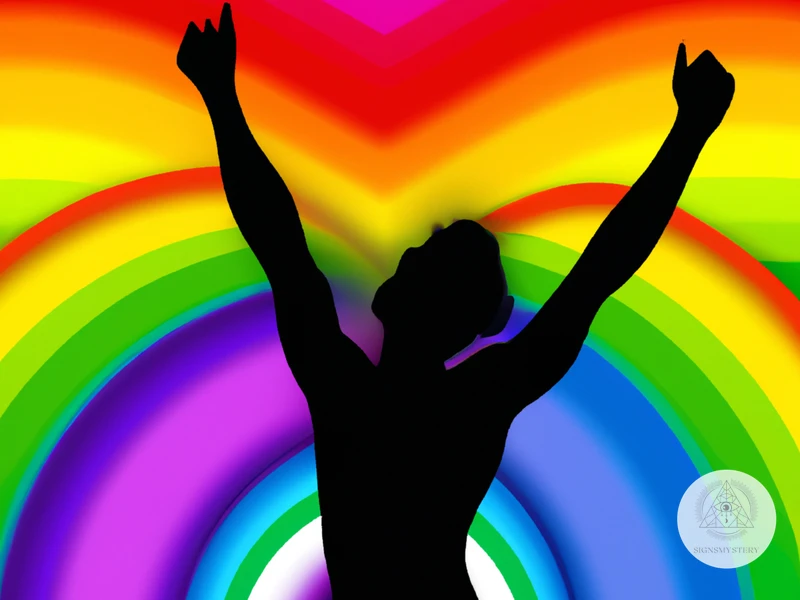
Ecstatic Dance is becoming a popular tool for Shamanic Journeying and Healing. To achieve the full benefits and deeper states of consciousness, certain techniques can be employed. Setting the intention of the dance before it begins is an important step to direct energies towards the desired outcome. Creating a sacred space and altar helps to connect with the spirit realm and ancestors, and serves as a visual reminder to focus on the intention. Body preparation is another important aspect that includes loosening up the body and breathwork to prepare for the journey. Entering the trance state involves letting go of the ego and allowing the body to move freely to the rhythm of the music. After the dance, integration and reflection help to ground the experience and connect with the lessons learned. Employing these techniques can lead to a more profound experience and deeper healing.
Setting the Intention
Setting the intention is a crucial step in preparing for an ecstatic dance shamanic journeying and healing session. It involves focusing your mind on a specific goal or purpose for the dance session. This goal could be to release negative emotions, connect with your ancestors, or heal physical or emotional wounds.
One effective way to set your intention for the session is to write it down beforehand. This helps to clarify your goals and bring them into focus. You can also share your intention with the group before the dance begins, which helps to create a supportive and cohesive environment.
Another technique for setting the intention is to use visualization. You can close your eyes and imagine yourself accomplishing your goal or the healing process taking place during the dance. This visualization helps to create a mental image of what you want to achieve and can help bring it into reality.
It’s important to remember that setting the intention shouldn’t be rushed or taken lightly. Take time to reflect on what you want to achieve and how it will benefit you. This will help you to focus your energies in the right direction and get the most out of your ecstatic dance shamanic journeying and healing session.
Sacred Space and Altars
Creating a sacred space is an essential element in any shamanic journeying or healing practice, including ecstatic dance. It sets the intention for the dance and provides a safe and protected environment for the participants to explore their inner worlds. A sacred space can be created in any physical location by using symbolic altars that represent specific intentions.
Altars can be as simple or elaborate as desired, and their purpose is to hold objects that symbolize specific energies or intentions. These objects may include candles, crystals, feathers, photographs, statues, or any other item that holds meaning for the individual or group. When creating an altar for ecstatic dance, it is important to consider the specific intentions of the dance. For example, an altar may be created with the intention of healing, transformation, or connection with spirit guides.
The location of the altar is also important. It should be placed in a central location, where it is visible and easily accessible. It can be placed on the floor, a table, or any other surface that is sturdy and secure. The altar should be adorned with colors, fabrics, and other objects that represent the energy of the intention.
Once the altar is created, it is important to cleanse and bless the sacred space. This can be done through the burning of sage, the sprinkling of holy water, or any other ritual that cleanses and purifies the area. The participants of the dance should also be invited to set their own intentions and offer their own prayers or blessings.
Creating a sacred space is an important aspect of ecstatic dance for shamanic journeying and healing. It allows for a deeper connection with the self, others, and spirit guides. By including altars that represent specific intentions, the participants can enhance their experience and receive the full benefits of the practice.
Body Preparation
Before engaging in ecstatic dance for shamanic journeying and healing, it’s essential to properly prepare the body to enhance your experience and protect yourself from potential injuries.
Stretching and Warm-up
Stretching and warm-up exercises are crucial parts of body preparation for ecstatic dance. Stretching properly can help reduce the risk of injuries, increase blood flow, and enhance muscle flexibility.
Breathing
Deep breathing exercises are also essential for body preparation. Controlled breathing can help calm the mind and create a sense of focus and grounding, which can aid in entering into a more profound trance state.
Fluidity of Movement
Developing fluidity of movement is another crucial aspect of body preparation for ecstatic dance. It involves consciously practicing each movement, gradually building muscle memory and efficiency. This practice can enhance the dancer’s overall creativity, physical expression and ability to achieve a more profound trance state.
Pacing and Listening to Your Body
Pacing oneself and listening to the body is important in body preparation for ecstatic dance. Pushing yourself too hard or too quickly can lead to injury or burnout. Movement should be done in a way that feels comfortable and natural for the body, while still challenging oneself to explore new limits.
Hydration and Nourishment
Hydration and nourishment are also essential in body preparation for ecstatic dance. Because this type of dance can be physically demanding, it’s vital to stay hydrated throughout. Drinking enough water before, during, and after the dance helps keep the body hydrated, energized, and ready to move freely. Nourishing food should also be consumed to provide the body with the necessary fuel for the dance.
By properly preparing the body, one can create an environment where mind, body, and spirit align. Preparing the body for ecstatic dance can help maximize the experience, leading to a deeper connection with the self and the divine.
Entering the Trance State
Entering the trance state during ecstatic dance is the ultimate goal for shamanic journeying and healing. Here are some techniques that can help you enter a trance state:
| Breath Work: | Breathing deeply and rhythmically can help you relax and calm your thoughts. You may try circular breathing, which involves inhaling through your nose and exhaling through your mouth in a continuous cycle to increase oxygen flow. |
| Movement: | Allow the music and your body to guide you. Move freely and without self-judgment or consciousness, and try to explore new ways of moving your body. |
| Drumming: | If the music is accompanied by live drumming, try to synchronize your movements with the rhythm of the drums. The repetitive beats can induce a trance state and help you connect with the energy of the earth. |
| Meditation: | Focus on your breath, a particular sound or visualize a symbol that has significance for you. Try to clear your mind and let go of any distractions. |
Once you feel that you have entered the trance state, allow yourself to surrender to the experience and let go of any emotions, thoughts or beliefs. Remember to stay connected to your body and breath throughout the dance and trust your intuition
Subscribe to Our Newsletter
Sign up to receive the latest news and updates.
Integration and Reflection
Integration and reflection are crucial for a successful shamanic journey and healing through ecstatic dance. After the dance, it is important to take time to integrate the experience and reflect on any insights or messages received.
One effective way to integrate is through journaling. Writing down thoughts and feelings can help process and make sense of the experience. A list of reflective questions can also be helpful:
- What did I experience during the dance?
- Were there any messages or insights that came to me?
- How do I feel physically and emotionally after the dance?
- What changes or shifts do I notice within myself?
In addition to journaling, it can be beneficial to engage in a grounding activity such as walking, meditating, or simply being in nature. This helps to bring the focus back to the present moment and integrate any insights into daily life.
Another aspect of integration is sharing the experience with others. This can be done in a safe and supportive community or with a trusted friend. Expressing oneself verbally can deepen the understanding and bring clarity to the experience.
Integration and reflection should not be rushed. Give yourself time and space to fully process the experience. It is also important to remember that healing is a journey, and each experience is unique and valuable in its own way.
Personal Growth and Healing Benefits of Ecstatic Dance
Ecstatic dance is not only a form of physical exercise but also a way of unlocking deep emotional and spiritual energies. Releasing stored emotions is one of the most significant benefits of ecstatic dance, as it allows individuals to let go of negative feelings and pent-up emotions. Another positive aspect of this dance form is the increase in energy and vitality it provides, which can lead to enhanced physical health and mental well-being. Ecstatic dance fosters creativity and intuition, providing individuals with a sense of liberation and freedom. The dance also helps to establish a connection with spirit guides and ancestors, leading to a greater sense of purpose and belonging. Finally, ecstatic dance can be used to aid in the healing of trauma and emotional wounds, as well as to address a wide range of spiritual and psychological challenges.
Releasing Stored Emotions
One of the most significant benefits of ecstatic dance in shamanic journeying and healing is the ability to release stored emotions. Our bodies and minds are constantly absorbing and holding onto emotions, and without proper release, they can build up and cause physical and emotional discomfort.
Through the practice of ecstatic dance, individuals can tap into their emotional states and move through them freely. This can be especially beneficial for those who struggle with expressing their emotions in other settings. Ecstatic dance provides a safe and non-judgmental environment to let go and release emotions that have been stored for years.
Below are some ways in which ecstatic dance helps with releasing stored emotions:
| Ecstatic Dance Technique | How it Helps |
|---|---|
| Free-Form Movement | Allows for organic and authentic expression of emotions without the constraints of choreography or structure. |
| Repetitive Beats and Rhythms | Can induce a state of trance that helps to bypass the rational mind and release stored emotions from the body. |
| Group Energy and Support | Being surrounded by a supportive community can provide a safe container to express and release emotions and can help validate and normalize emotional experiences. |
| Integration and Reflection | After the dance, participants can reflect on their experiences and emotions, which can lead to deeper understanding and acceptance of themselves and their emotions. |
Releasing stored emotions through ecstatic dance can have a profound impact on an individual’s emotional and physical well-being. It can lead to a decrease in stress and anxiety, an increase in self-awareness and self-acceptance, and can improve overall emotional resilience.
It’s important to note that one may experience intense emotions during an ecstatic dance session. It’s essential to honor and respect one’s emotions and practice self-care after the dance. This may include things like journaling, taking a bath, or spending time in nature.
Ecstatic dance can be a powerful tool for releasing stored emotions, which can lead to significant personal growth and healing. By allowing oneself to move freely and express emotions through dance, individuals can tap into the body’s wisdom and release what no longer serves them.
Increase in Energy and Vitality
Ecstatic dance is an effective way to boost your energy and vitality levels. With the invigorating beat of the music, movement and flow of the body, and release of endorphins, you’re sure to feel revitalized and energized after every session of ecstatic dance.
Let’s take a look at the ways in which ecstatic dance can help increase your energy and vitality:
| Benefits of Ecstatic Dance for Energy and Vitality | Description |
|---|---|
| Cardiovascular Fitness | Ecstatic dance involves constant movement, often at an intensive pace, that can improve the health and efficiency of your heart, lungs, and blood vessels. Dancing for an extended period can increase endurance, help burn calories, and lower the risk of cardiovascular disease. |
| Release of Endorphins | Endorphins are natural chemicals that help regulate emotions and reduce pain. During ecstatic dance, the release of endorphins can cause a feeling of euphoria and positive emotions, boosting your energy levels. |
| Stress Reduction | Stress is a significant drain on energy levels. Ecstatic dance can help reduce the levels of the stress hormone cortisol, allowing you to feel more relaxed, energized and focused. |
| Increased Oxygenation | Dancing improves oxygenation of the body’s cells and tissues, leading to an increase in ATP energy production. This can result in a reduction in fatigue and an increase in overall energy levels. |
Ecstatic dance is an effective way to increase your energy and vitality levels, as it provides cardiovascular exercise, releases endorphins, reduces stress, and increases oxygenation. By incorporating ecstatic dance into your life, you can improve your overall well-being and experience a boost in energy that can help improve your productivity and quality of life.
Enhancement of Creativity and Intuition
One of the most intriguing benefits of ecstatic dance in shamanic journeying and healing is its ability to enhance creativity and intuition. When we dance, we tap into our primal nature, which allows us to connect with our inner selves and access deeper levels of consciousness.
Enhancement of Creativity: Ecstatic dance has been proven to help boost creativity by freeing the mind from limitations and negative self-talk. As we dance, our bodies move freely, our minds become clearer, and our spirits become more open to new ideas and inspirations. This can be especially useful in creative pursuits such as writing, painting, or music composition.
Enhancement of Intuition: Through ecstatic dance, we are able to tap into our intuition and develop a deeper sense of self-awareness. As we move to the beat of the music, our bodies become more attuned to our surroundings, allowing us to pick up on subtle cues and energies that we might otherwise miss. This can help us make better decisions in all areas of our lives, from relationships to career choices.
There are several techniques that can help enhance creativity and intuition in ecstatic dance:
| Technique | Description |
| Free-form Movement | Moving your body in whatever way feels natural and organic without any preconceived notions or expectations |
| Utilizing Props | Using scarves, ribbons, or other props to explore different movement patterns and enhance self-expression |
| Partner Dancing | Dancing with a partner can help you develop a greater sense of trust and intuition in your interactions with others |
| Closing Your Eyes | Shutting out external stimuli and allowing your body to move freely can help you tap into your inner intuition and creativity |
By incorporating these techniques into your ecstatic dance practice, you can enhance your ability to connect with your inner self, access deeper levels of consciousness, and unlock your true creative potential.
Connection with Spirit Guides and Ancestors
During ecstatic dance, participants enter into a trance-like state that allows them to connect with their spirit guides and ancestors. This connection can manifest in various ways, including receiving messages or visions, feeling a physical sensation or presence, or experiencing a profound sense of guidance and support.
Through the use of intentional movement and rhythmic music, participants can reach a heightened state of awareness and access deeper levels of consciousness. This can help to facilitate a stronger connection with their spiritual helpers and guides.
In many shamanic traditions, such as those of indigenous cultures, ancestors play a significant role in the healing process. The belief is that ancestors are always present and available to offer guidance and support, and that they can help to heal intergenerational trauma and wounds.
During ecstatic dance, participants can invite their ancestors to join them in the dance, expressing gratitude and asking for their blessings and assistance. This can help to cultivate a stronger relationship with one’s lineage and to tap into the wisdom and guidance of one’s ancestors.
Connecting with spirit guides and ancestors through ecstatic dance can be a powerful tool for personal growth and healing. It offers a unique opportunity to tap into the collective wisdom and support of one’s lineage and to access guidance beyond one’s conscious awareness. By embracing the power of ancestral connection, individuals can gain a deeper understanding of their own soul’s journey and purpose.
Healing Trauma and Emotional Wounds
Ecstatic Dance is a powerful way to address and heal trauma and emotional wounds. Traumatic experiences can leave deep scars that affect one’s mental, physical, and emotional health. Through dance, a person can access and release these stored emotions, allowing for a cathartic release and opening the door for healing.
The body stores memories of trauma in the form of tension, stiffness, and pain. Ecstatic Dance techniques can help release these stored tensions, allowing the body to relax and heal. In the safe and supportive space provided by the ritualistic dance practices, a person can drop their guard and move freely, trusting the body and surrendering to the divine.
Dance can help one reconnect with their emotions and tap into their innermost feelings. It provides a non-verbal outlet for the expression of one’s emotions and allows for the release of deep-seated emotions that one might otherwise be unable to express. It can help one let go of any blocks that are preventing them from moving on from a traumatic experience.
Through dance, a person can reclaim a sense of control over their body and mind, a feeling that might have been lost during the traumatic event. Ecstatic Dance practices can also help a person rebuild self-esteem and self-confidence, which can be deeply compromised in the aftermath of trauma.
By connecting with their body and emotions, a person can gain important insights into their trauma and begin to heal. Ecstatic Dance can help a person process traumatic experiences, allowing them to move through emotions like fear, anger, and sadness, to arrive at a place of acceptance, forgiveness, and wholeness.
Ecstatic Dance can be a deeply cathartic and healing experience for those seeking to address and heal from trauma and emotional wounds. By connecting with their body, emotions, and spirit, a person can access deep-seated emotions, release stored tensions, and move towards a place of healing and integration. It is an empowering and transformative practice that can offer a pathway to healing and growth.
Conclusion
Conclusion:
After delving into the rich history and cultural significance of ecstatic dance in shamanism, it is clear that this ancient practice still holds immense value in contemporary times.
Through setting intentions, creating sacred space, and preparing the body, individuals can enter into a trance state to connect with their inner selves and the spiritual realm. This connection can bring about personal growth, healing, increased energy, creativity, and intuition.
While there are various ethnic and tribal dance traditions that incorporate shamanic elements, the overarching theme remains the same: using movement to access deeper levels of consciousness and healing.
It is important to remember that this practice is not solely reserved for trained dancers or experienced shamans. Anyone can incorporate ecstatic dance into their spiritual practice, and experience the transformative effects it can have on their mind, body, and spirit.
If you are interested in exploring this practice further, seek out local communities that hold regular ecstatic dance events, or create your own practice at home. Allow yourself to let go and surrender to the movement, and witness the magic unfold.
References:
– Belitz, C., & Belitz, W. (2011). Ecstatic Body Postures: An Alternate Reality Workbook. Inner Traditions/Bear & Co.
– Halprin, D. (1973). The RSVP cycles: Creative processes in the human environment. George Braziller.
– Kalweit, H., & Kalweit, P. (1985). Dreamtime and inner space: The world of the shaman. Shambhala.
– May-Benson, T. A., & Koomar, J. A. (2010). Systematic review of the research evidence examining the effectiveness of interventions using a sensory integrative approach for children. Journal of occupational therapy, schools, & early intervention, 3(3), 174-207.
– Winkelman, M. (2010). Shamanism: A biopsychosocial paradigm of consciousness and healing. Santa Barbara, CA: ABC-CLIO.
References
The following references were used in the research of this article:
- Cauldwell, J. (2016). Ecstatic Dance: A Guide to Moving Meditation. Createspace Independent Publishing Platform.
- Furth, G. (2001). Ecstatic Body: Shamanism and Transpersonal Psychology. State University of New York Press.
- Harner, M. (1990). The Way of the Shaman. HarperCollins Publishers.
- Katz, R. (1982). Boiling Energy: Community Healing Among the Kalahari Kung. Harvard University Press.
- Kent, A. (2014). Shamanism and Ecstatic States in Tribal Healing Traditions. Routledge.
- Levine, G. (1985). Trance and Dances of Death and Ecstasy. Bantam.
- Lira, E.V. (2018). The Healing Power of Movement: How to Benefit from Ecstatic Dance. Lulu.com.
- McDowell, J. (2005). Dancing in the Desert: Prayers and Reflections on Moving. Paulist Press.
- Neumann, E. (2019). Shamanic Healing: Traditional Medicine for the Modern World. HarperCollins Publishers.
- Parfitt, W. (2013). Dancing on the Earth: Women’s Stories of Healing and Dance. She Writes Press.
These texts provide a wealth of information on the role of ecstatic dance in shamanic journeying and healing, including historical and cultural contexts, practical techniques for entering the trance state, and personal growth and healing benefits. They are valuable resources for anyone interested in exploring this powerful and transformative practice.
Frequently Asked Questions
1. Can anyone participate in ecstatic dance?
Yes, anyone can participate in ecstatic dance regardless of age, gender, dance experience, or fitness level. The movements are free-form and allow for personal expression.
2. What is the difference between ecstatic dance and traditional dance?
Ecstatic dance is not choreographed and has no set steps, whereas traditional dance follows specific steps and patterns. Ecstatic dance is also often done with eyes closed to encourage inner exploration and connection.
3. Is ecstatic dance religious or spiritual?
Ecstatic dance can be practiced as a spiritual or meditative practice, but it is not tied to any specific religion or belief system. It is a form of personal expression and exploration.
4. Do I need special clothing for ecstatic dance?
No, there is no specific dress code for ecstatic dance. Wear comfortable clothes that allow for free movement and avoid wearing jewelry or other accessories that could get in the way of dancing.
5. Is it safe to enter a trance state during ecstatic dance?
Yes, entering a trance state during ecstatic dance is a natural and safe process. However, it is important to remember to stay hydrated and take breaks as needed to avoid overexertion.
6. Can ecstatic dance be practiced alone?
Yes, ecstatic dance can be practiced alone as a form of self-expression and reflection. However, dancing in a group can enhance the experience and create a sense of community.
7. Is there a specific music genre used in ecstatic dance?
No, there is no specific music genre used in ecstatic dance. The music is typically rhythmic and instrumental and can range from electronic to world music to live drumming.
8. How long should an ecstatic dance session last?
The length of an ecstatic dance session can vary, but typically lasts anywhere from 60-90 minutes. However, it is important to listen to your body and take breaks as needed.
9. Can ecstatic dance help with anxiety and depression?
Yes, ecstatic dance has been shown to help reduce anxiety and depression by releasing stored emotions and increasing feelings of joy and connection.
10. Is it necessary to have a background in shamanism to practice ecstatic dance?
No, it is not necessary to have a background in shamanism to practice ecstatic dance. It is simply a tool that can be used to enhance the experience and deepen the connection with oneself and the spiritual realm.

